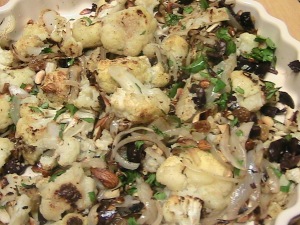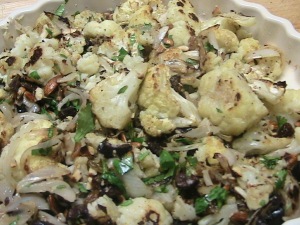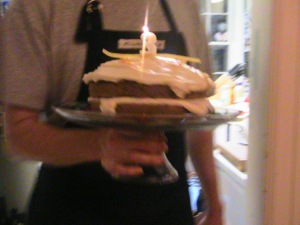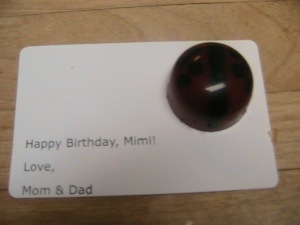Archive for November 2009

Alas, Thanksgiving is over. Our leftovers are nearly finished, and I’m hearing holiday music in the coffee shop and all the stores. We’ve turned the corner.
But I hate to leave the turkey behind. I love Thanksgiving, but have decidedly mixed feelings about the more commercial season that follows it, so I’m always a little sad as I wash the dishes after the big meal, a meal that seems so simple, straightforward, and lovely. What could be better than an entire day set aside to eating well and feeling grateful?
I’m going to try to keep the spirit of Thanksgiving alive this year by maintaining and expressing gratitude as often as possible during the next few weeks. To that end, I’d like to begin the season with a simple expression of gratitude to my friends and family. Thank you for sharing your time with me~such a rare commodity. Thank you for keeping me in your thoughts. I may not say it often enough, but I’m grateful to you all.
So, here’s a poem to inaugurate my season of gratitude.
 Love Like Salt
Love Like Salt
by Lisel Mueller
It lies in our hands in crystals
too intricate to decipher
It goes into the skillet
without being given a second thought
It spills on the floor so fine
we step all over it
We carry a pinch behind each eyeball
It breaks out on our foreheads
We store it inside our bodies
in secret wineskins
At supper, we pass it around the table
talking of holidays and the sea.

I grew up eating cranberry sauce only once or twice a year. In fact, I thought it was available in stores only during the holidays so when I discovered that it could be purchased and eaten year-round, I became a bit of a cranberry sauce fanatic, eating it nearly every day for a couple of years. Ocean Spray, of course.
But then I encountered the cheery little berries in their pre-gelled state and tried out the extremely simple recipe on the side of the bag. There was no going back. Over the years, I’ve adapted the recipe a bit, but the sauce is still ridiculously easy to make and truly festive. It’s the perfect astringent accompaniment to the carb-fest that is the traditional Thanksgiving meal. It also provides a bit of a color on the plate, a small jewel among all that beige food.
This cranberry sauce is highly addictive, if I may say so myself. It’s my favorite part of the holiday meal, the only part of it that I cannot imagine changing or leaving off of the menu.
I’m not sure how much of the alcohol cooks out of the sauce, so I try to limit Mimi’s consumption, for obvious reasons. She’s none too happy about it and who can blame her? Still, a little bit is better than none.
Happy Thanksgiving.
Cranberry Sauce
1 scant cup sugar
3/4 cup orange juice
1 cinnamon stick
a pinch of salt
1 12 oz. bag of fresh cranberries
1 tsp. orange peel
2 tbs. Grand Marnier
Bring the orange juice, sugar, cinnamon stick, and salt to a boil in a large, heavy sauce pan. Add the cranberries and simmer on medium heat for five minutes, stirring occasionally. The cranberries will pop and thicken the sauce. Test for thickness. If you prefer a thicker sauce, let it simmer for an additional five minutes or so. Remove from heat. Add the orange peel and Grand Marnier. Stir and allow to cool. Transfer to a covered class container and continue to cool. Refrigerate for up to three days.
We’ll be celebrating Thanksgiving at home this year with our friends Jeff and Karen. I expect it to be a fun but busy week, filled with oven-cleaning (an annual tradition), grocery shopping, and cooking. I’m posting the proposed menu now, in case things get too hectic. Most of these recipes come from the November issue of Bon Appetit. One exception is the cranberry sauce, which is my absolute favorite part of the Thanksgiving meal. I’ll post more about it later in the week.
Thanksgiving 2009–Dinner Menu
Sage Butter-Roasted Turkey with Cider Gravy
Sourdough Stuffing with Sausage, Apples, & Sultanas
Grand Marnier Cranberry Sauce
Onion Marmalade
Broccolini with Smoked Paprika, Almonds, & Garlic
Mashed Yukon Gold Potatoes with Truffle Oil
Butterscotch Pumpkin Pie with Scotch Infused Whipped Cream
Pear Crisp with Candied Ginger
Rioja
Cava
On Monday, Mimi was suffering from the remnants from a cold and was feeling too miserable to do much of anything. Housebound, I realized it was the perfect day to deal with the mountain of chestnuts that we had and decided to spend the morning with Mimi, making marrons glacés, candied chestnuts.
 The morning sun filtered through the kitchen window and seemed to offer some kind of solar blessing to our project. We proceeded with great enthusiasm. At first.
The morning sun filtered through the kitchen window and seemed to offer some kind of solar blessing to our project. We proceeded with great enthusiasm. At first.
To prepare chestnuts for cooking, (1) split them into two halves and boil for 7.5 minutes. Transfer immediately to a bowl of ice water. (2) The shell will slip off easily, (3) leaving behind only the brown skins to remove.
These are the instructions for blanching chestnuts that I found on-line. I’ve delineated the steps for a reason.
The first step, cutting the chestnuts in half, was challenging in its way, though not impossible. I blanched them as directed and then peeled off the outer shells, no problem. Notice, however, that these instructions do not offer a handy adjective to provide an idea about the degree of difficulty for the third step, removing those brown skins. There’s a reason for that.

That brown skin was something else again. Sometimes, I could get my paring knife underneath the skin and it would slip right off. When that happened, I felt in sync with the ancient rhythms of my ancestors, who undoubtedly performed this task back in the boonies of France.
Then there were the “rogue” chestnuts, whose skins simply would not come off without a lot of effort. Those were roughly treated, the skin peeled away as inefficiently as necessary by a cook whose small, sick child was growing increasingly tired of the chestnut project. Nearly two hours into the job, I finally had one quart’s worth of peeled chestnuts. Witness:
 Yes, that is all there is. Luckily, it was enough.
Yes, that is all there is. Luckily, it was enough.
To preserve chestnuts: simmer chestnuts, along with a split vanilla bean, in a small sauce pan at a low temperature until fork tender. This may take as long as two hours. Before cooking, weigh the chestnuts and prepare a sugar and water solution of equal weight. Simmer the sugar syrup over low heat until it thickens. This may take as long as two hours. When both the chestnuts and the syrup finish, drain the chestnuts, return them to the saucepan, submerge in the sugar syrup, add a slug of vanilla, and simmer at a low temperature until the chestnuts candy. This may take as long as an hour and a half.
It was slow going, but didn’t require much work on my part. Here are some blurry photographs of the results:
 Am I happy with preserved chestnuts?
Am I happy with preserved chestnuts?
Well…I’m not one to complain about the workload, but really, this was too much for me. The tips of my fingers are shredded. It’s definitely not a job to do with a small child, especially not one who is already fractious.
 The candied chestnuts and their syrup are, however, really fabulous over brown sugar ice cream.
The candied chestnuts and their syrup are, however, really fabulous over brown sugar ice cream.

I’ve been thinking a lot about ancient foods lately, partly because of all the chestnuts I have piled up around here, partly because I’m teaching Michael Pollan’s The Omnivore’s Dilemma this week, and partly because of my friend Amy, who has been writing about related issues and featuring lovely photos of farro and pistachios over at The Roving Locavore.
Ancient foods are those foods that humans have been eating since we slithered out of the sea and eventually became the land-dwelling creatures with complex brains that we are (errr…some of us, anyway–Sarah Palin’s book is on the bestseller list, isn’t it?). Humans and our ancestors have been eating foods like farro, chestnuts, chick peas, lentils, beans, nuts, rice, quinoa, bulgur, fish, yogurt, and greens for many millenia. These are the foods that sustained us on our evolutionary journey, the foods that gave us our large brains, the foods around which many of the world’s culinary cultures revolve (R.I.P., Claude Lévi-Strauss).

But these foods don’t play major roles in the American diet in the year 2009, a fact that Michael Pollan, Eric Schlosser, Marion Nestle, and others argue contributes to the high rates of obesity and chronic illnesses experienced by a large percentage of the American population. It should not surprise me as much as it does, since I can see it for myself, but the obesity rate in my home state is 34%, according to the most recent CDC figures. Of course, the sedentary lifestyles of my fellow citizens undoubtedly contribute to that figure, but popular local foods like chicken fingers, hot wings, and fried macaroni and cheese (I kid you not) are also likely culprits.
And while Alabama is one of the fattest states in the nation, it is by no means the exception. So many people have written about the poor American diet and the repercussions of our terrible eating habits that it seems unnecessary to do that now. Instead, my purpose here is to celebrate one these ancient wonders in the best way that I can think of: by cooking and eating it.
And, of course, by sharing the recipe for farro with roasted butternut squash. Farro may be one of the oldest foods that humans eat as well as one of the healthiest. It’s very easy to cook (just boil it until it softens, but still retains a nice, chewy texture) and also happens to taste quite good. Really very good, in fact. Although a bit expensive and difficult to find in these parts, it can be purchased on-line from Earthy Delights.

Farro with Roasted Butternut Squash and Goat Cheese
1 cup of farro
1 large or two small butternut squashes, peeled, deseeded, and cut up into 2 inch pieces
1 tbs. olive oil
1 tsp. dried sage
1 small log of goat cheese (preferably Belle Chevre brand), crumbled
1 large handful of Italian parsley, coarsely chopped
1 large handful of fresh basil, coarsely chopped
Good quality balsamic vinegar, to drizzle over the top (optional)
Preheat over to 425 degrees. In a large sauce pan, completely cover the farro with water; bring to a boil over high heat, reduce heat the low and simmer farro for 30 minutes or until slightly chewy, but cooked through.
Meanwhile, toss the squash with olive oil, sage, salt and pepper. Spread out squash in one layer on a large, rimmed cookie sheet. Roast for 35-45 minutes, until the squash cooks through and caramelized. Drain the farro and place on a large serving platter. Add salt and pepper to taste. Cover with the farro with the roasted squash, dot the squash with pieces of goat cheese, sprinkle with parsley and basil. Drizzle with a teaspoonful or so of good quality balsamic vinegar, if you’d like. Serve immediately. Yields 3-4 servings.


This has been a busy week filled with birthdays, guests, illness, and car trouble. We’ve managed to eat well though by relying upon a battery of easy meals made from pantry staples.
Here’s one of my favorites: Cauliflower with Almonds, Olives, and Caramelized Onions served over Cous Cous, which I’ve adapted from a recipe by Deb at Smitten Kitchen. I’ll give my version of the recipe later on, but for the moment, I’d like to ponder the nature of adaptation.
I use recipes in a variety of ways. There are some –not very many though — that I follow to the letter. These are mostly for baked goods, where precision matters. Other recipes — that is to say most of them — I use as guides more than anything else. Still others function as inspiration for radically different uses of technique or ingredients.
I suppose all cooks work this way. My question is: when does a recipe become my own? When can I claim a recipe as my own original intellectual property? I guess it’s the same question that my students have in mind when they ask me if they should cite something like the date that Columbus sailed the “ocean blue.” (It’s the same issue at work in the Charlie Kaufman film Adaptation, except without the unexpected crocodile.)
So, what is an original recipe? Are there any — well, are there any that aren’t products of molecular gastronomy? Is there anything new under the sun or deep in the ocean blue?
The cauliflower recipe — which Deb adapted from a recipe by Michael Anthony of the Gramercy Tavern, and is, therefore, an adaptation of an adaptation — is the easiest thing in the world to make and awfully tasty at the end of a long weekday, when you feel like you’ve been drowning in the ocean. And even though my own version is quite a bit different from Deb’s, I’m not prepared to call this one original property.
Cauliflower with Almonds, Olives, and Caramelized Onions (adapted from a recipe by Deb at Smitten Kitchen)
2 large onions, cut in half and thinly sliced
3 tbs. olive oil
1 large head of cauliflower, or two small heads, cut or broken into large segments
1 tsp. ground cumin
2 tbs. Sultanas (golden raisins)
1 tbs. cider vinegar
1 tbs. water
2 tbs. pitted, sliced Kalamata olives
2 tbs. toasted almonds, chopped
1 large handful of cilantro, chopped
1 1/2 cups prepared cous cous
1 Tbs. Argan oil* (optional)
1/4 tsp. Baharat **(optional)
Salt to taste
Preheat oven to 425 degrees (F). To caramelize the onions: in a large frying pan, heat 1 tbs. of the olive oil until shimmering. Add the onions and cook over medium heat for about 20 minutes, stirring occasionally, until onions are golden brown. Meanwhile, toss the cauliflower in the remaining olive oil and cumin. Scatter cauliflower onto a large rimmed cookie sheet, making sure that the cauliflower remains in one layer. Roast for 25 minutes or until the cauliflower turns golden brown.
In a small saucepan, combine the vinegar, raisins, and water. Bring to a simmer over medium high heat and cook for 2 minutes.
Cook cous cous according to the package directions.
When the cauliflower is brown and caramelized, transfer to a large, deep serving dish. Add half of the caramelized onions, toasted almonds, raisins with liquid, and olives. Toss carefully until all is combined. Scatter the remaining carmelized onions on top, along with the cilantro.
Pour the argan oil and baharat over the cous cous and gently combine with a fork. Serve cauliflower on or beside a mound of cous cous. Serves 2 adults and one three year old with a passion for olives.

* Argan oil is the oil of the argan tree, which grows only in Morocco. Said to have miraculous healing properties, the oil is delicious on cous cous and in Greek yogurt. It tastes a bit like almond or hazelnut oil, both of which make adequate substitutes. I get organic argan oil from Zamouri Spices.
**Baharat is a very hot spice blend that is the traditional spice for cous cous. Use with caution. It’s available at http://www.thespicehouse.com.

Mimi turned three years old yesterday. Today, we went to visit a Montessori school where she may attend preschool next fall. The years go by so quickly; she’ll be in college before I know it.
Her party was attended by her grandparents, who drove all the way from St. Louis to spend the weekend with us. Mimi was thrilled and so was I. It was a small party, with just her grandparents and parents. Dinner consisted of Mimi’s favorite meal: pasta with pesto (and steak, left over from Saturday night).

Mimi chose the cake this year since she now has a very refined sense of taste. She made a classic choice, carrot cake with cream cheese frosting, which I made using a barely-adapted recipe from Fine Cooking. I decorated the cake with strips of candied orange peel and little ladybug truffles filled with Valrhona chocolate, a favorite of Mimi’s from way back.

3
The ladybugs come from John and Kira’s, one of my favorite sources for chocolate gifts.
 Jim carried in the cake.
Jim carried in the cake.

Mimi blew out the candle as soon as he put the cake in front of her. We didn’t even have time to finish singing the requisite “Happy Birthday to You,” so we relit, sang, sliced, and then fell upon our pieces of cake. It was delicious! Good choice, Mimi!

We finished the evening with a rousing game of “Noise Maker Chicken.”
 The object of the game seemed to be to make enough noise to blow the paint off the walls.
The object of the game seemed to be to make enough noise to blow the paint off the walls.
I think Da won.

Chestnut Experiment #1
I cooked the first batch of my chestnuts in the obvious way, by roasting them at 350 degrees for 30 minutes in the convection oven. Although not the most romantic approach, they turned out just fine: sweet, meaty, and a little bit nutty. When I scored the nuts with my trusty chestnut knife ($6 well-spent!), I was surprised to find them soft — nearly liquid — beneath their shells.
My in-laws, who are visiting this weekend from St. Louis, seemed to enjoy them well enough. However, they loved the blue cheese that I drizzled with chestnut honey. So did I. And although I intended this post to be about roasted chestnuts, it looks like I’m going to have much more to say about chestnut honey.
Honey is fantasy food, the stuff of imagination. Think about it: bees somehow fashion it from flower nectar. So dreamy… small children would conjure it up it in their play kitchens if it didn’t already exist.

The ubiquitous, plastic bear variety suggests a uniformity of honey flavor that belies the more complex reality. Like chocolate, coffee, and wine, the flavor of honey varies dramatically depending upon certain environmental factors — specifically for honey, the types of flowers from which their bees sip. Every flower produces its own uniquely-flavored nectar, the diverse poetry of nature.
Chestnut honey has a rich taste that is simply astounding (as I suppose it should be, at $17 for a 400 gram jar). The decidedly complex flavor starts off honey-sweet, then leaves behind a distinct but pleasantly bitter note, similar to darkly toasted bread. The Zingerman’s catalogue describes chestnut honey as having “a fascinating aroma: a little leather, tobacco, almost smoky, like you’re walking in a forest in fall.” The honey also happens to look beautiful, like the color of burnished chestnuts.
Because it is so rich, I suspect the little jar that I have will last for quite some time. The honey is too fine for ordinary use though, so I’ll have to come up with other interesting things to do with it. Maybe honey ice cream? As glaze for a cake? Drizzled over soft panna cotta?
But the chestnut honey will keep for ages. In the meantime, I still have about 3 1/2 pounds worth of fresh chestnuts to dispatch.

 Love Like Salt
Love Like Salt














 Jim carried in the cake.
Jim carried in the cake.

 The object of the game seemed to be to make enough noise to blow the paint off the walls.
The object of the game seemed to be to make enough noise to blow the paint off the walls.
